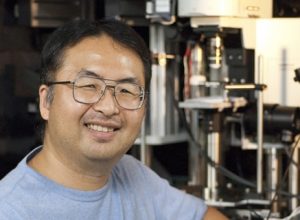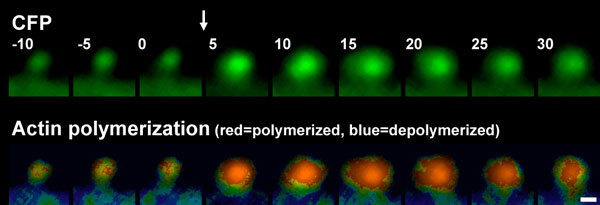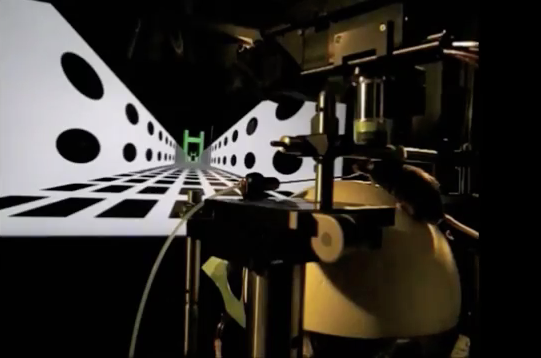
M.D., Ph.D. Professor Yasunori Hayashi
We daily form new memories. Surprisingly, once we remember something, we can recall them even after decades. What is the mechanism that keeps these memories in our brain?
We are particularly interested in hippocampus, a brain region involved in initial formation of memory. In hippocampus, short intense stimuli potentiate synaptic responses over a long period of time, a phenomenon known as long-term potentiation (LTP). We consider that LTP is a cellular counterpart of memory and are trying to elucidate the molecular mechanism of this phenomenon.
Research and Education
We are particularly interested in a brain region called hippocampus. In humans and animals with hippocampal damage, no new memories are formed. This indicates that hippocampus is necessary for the formation of new memories.
About 40 years ago, Bliss and Lømo discovered an interesting phenomenon in the hippocampus. They found that synaptic responses in the hippocampus is enhanced over the long period of time by a short but intense stimulation, which is now known as long-term potentiation (LTP). LTP is thought to be a cellular phenomenon of memory from several lines of evidence. For example, a drug that inhibits LTP can impair formation of memory. Also, memory induction enhances synaptic responses in a similar way to LTP.
Using LTP as a cellular model, we are trying to elucidate the molecular mechanism of memory. To this end, we are using various techniques such as molecular biology, electrophysiology, animal behavioral experiments, and imaging to advance our research.
 Figure 1. Visualization of synaptic plasticity processes.
Figure 1. Visualization of synaptic plasticity processes.
FRET was used to visualize the actin polymerization state. LTP was induced at the arrow. Scale bar is 0.5 µm and time stamp in minutes.
 Figure 2. Visualization of formation of cell assembly during memory formation in hippocampus.
Figure 2. Visualization of formation of cell assembly during memory formation in hippocampus.
The mouse runs on a Styrofoam sphere and a virtual reality space updated as it moves.
Neuronal activity in the hippocampus is observed using a two-photon microscopy.
Recent Publications
- Goto, A., Bota, A., Miya, K., Wang, J., Tsukamoto, S., Jiang, X., Hirai, D., Murayama, M., Matsuda, T., McHugh, T.J., Nagai, T., & Hayashi, Y. (2021).
Stepwise synaptic plasticity events drive the early phase of memory consolidation. Science (New York, N.Y.), 374(6569), 857-863. - Hosokawa, T., Liu, P.W., Cai, Q., Ferreira, J.S., Levet, F., Butler, C., Sibarita, J.B., Choquet, D., Groc, L., Hosy, E., Zhang, M., & Hayashi, Y. (2021).
CaMKII activation persistently segregates postsynaptic proteins via liquid phase separation. Nature neuroscience, 24(6), 777-785. - Saneyoshi, T., Matsuno, H., Suzuki, A., Murakoshi, H., Hedrick, N.G., Agnello, E., O’Connell, R., Stratton, M.M., Yasuda, R., & Hayashi, Y. (2019).
Reciprocal Activation within a Kinase-Effector Complex Underlying Persistence of Structural LTP. Neuron, 102(6), 1199-1210.e6. - Kim, K., Lakhanpal, G., Lu, H.E., Khan, M., Suzuki, A., Hayashi, M.K., Narayanan, R., Luyben, T.T., Matsuda, T., Nagai, T., Blanpied, T.A., Hayashi, Y., & Okamoto, K. (2015).
A Temporary Gating of Actin Remodeling during Synaptic Plasticity Consists of the Interplay between the Kinase and Structural Functions of CaMKII. Neuron, 87(4), 813-26. - Bosch, M., Castro, J., Saneyoshi, T., Matsuno, H., Sur, M., & Hayashi, Y. (2014).
Structural and molecular remodeling of dendritic spine substructures during long-term potentiation. Neuron, 82(2), 444-59.
Laboratory
Professor: Yasunori Hayashi yhayashi-tky@umin.ac.jp
Associate Professor: Tomohisa Hosokawa
Program-Specific Associate Professor(Hakubi Project): Misa Arizono
Assistant Professor: Steven Middleton
Assistant Professor: Nozomi Asaoka
